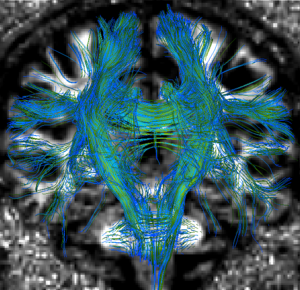Documentation/Nightly/Modules/AADEPIData
|
For the latest Slicer documentation, visit the read-the-docs. |
Introduction and Acknowledgements
|
Extension: Anomalous Filters | |||||||
|
Module Description
This module offers a simple application of the AAD filter on general echo-planar imaging (EPI) data. This approach could be useful to images such as, but not limited to, functional-MRI and arterial spin labelling (ASL). Since the image noise pattern is considered spread through the image space, the AAD filter could be a promising in order to decrease the noise amplitude and maintain the geometrical details of the image.
NOTE: The full compatibility of 4D volumes (usually adopted in fMRI and ASL data) is made by specific external modules, which means that the data loading process should be processed in advance to the actual AADEPI module application. The ... modules can be helpful.
NOTE: Although DWI and DTI images are also considered as EPI-like data, a specific module was also provided to these type of data. Please see AAD Diffusion Weighted Data module.
Use Cases
- Use Case 1: Decrease noise in a general EPI data
- fMRI and ASL data usually present low signal to noise ratio, offering practical difficulties for true positive signal detection. For the case of ASL processing, the AAD filtering application was discussed[1]
- EPI ASL raw.png
A single volume from a conventional ASL data
- EPI ASL AAD.png
The same volume filtered with AAD filter (q=...)
Tutorials
N/A
Panels and their use
IO:
- Input Volume
- Select the EPI input image
Parameters:
- Conductance
- A float value for edge preservation adjustment. The conductance regulates the diffusion intensity in the neighbourhood area. Choose a higher conductance if the input image has strong noise seem in the whole image space. If you want an automatic evaluation to conductance variable, please select the following methods
- Use Auto Conductance
- Choose if you want to use an automatic adjustment of conductance parameter. If this is checked, the inserted value is ignored and the optimization function below is used.
- Optmization Function
- A set of optimization function for automatic estimation of conductance parameter. This is helpful is you do not have an initial guess on what value is appropriate to the conductance setting. (Canny, MAD and Morphological). Please see the Insight-Journal article that explain each of these automatic conductance adjusment methods.
- Number of Iteractions
- A integer value that defines the number of iterations.
- Time Step
- A double value that regulates the numerical stability of the algorithm. It is safe to maintain the upper limit with the formulation given by Anisotropic Diffusion algorithm (See GradientAnisotropiDiffusionImageFilter in ITK documentation).
- Anomalous Parameter
- A double value that defines the q-Gaussian probability distribution function which is convoluated in each neighborhood in the image.
Similar Modules
References
- Senra Filho, A.C. da S. et al., 2017. Enhancing quality in Diffusion Tensor Imaging with anisotropic anomalous diffusion filter. Research on Biomedical Engineering, 33(3), pp.247–258. DOI: 10.1590/2446-4740.02017
- da S Senra Filho, A.C., Garrido Salmon, C.E. & Murta Junior, L.O., 2015. Anomalous diffusion process applied to magnetic resonance image enhancement. Physics in Medicine and Biology, 60(6), pp.2355–2373. DOI: 10.1088/0031-9155/60/6/2355
Information for Developers
| Section under construction. |
- ↑ doi:...



